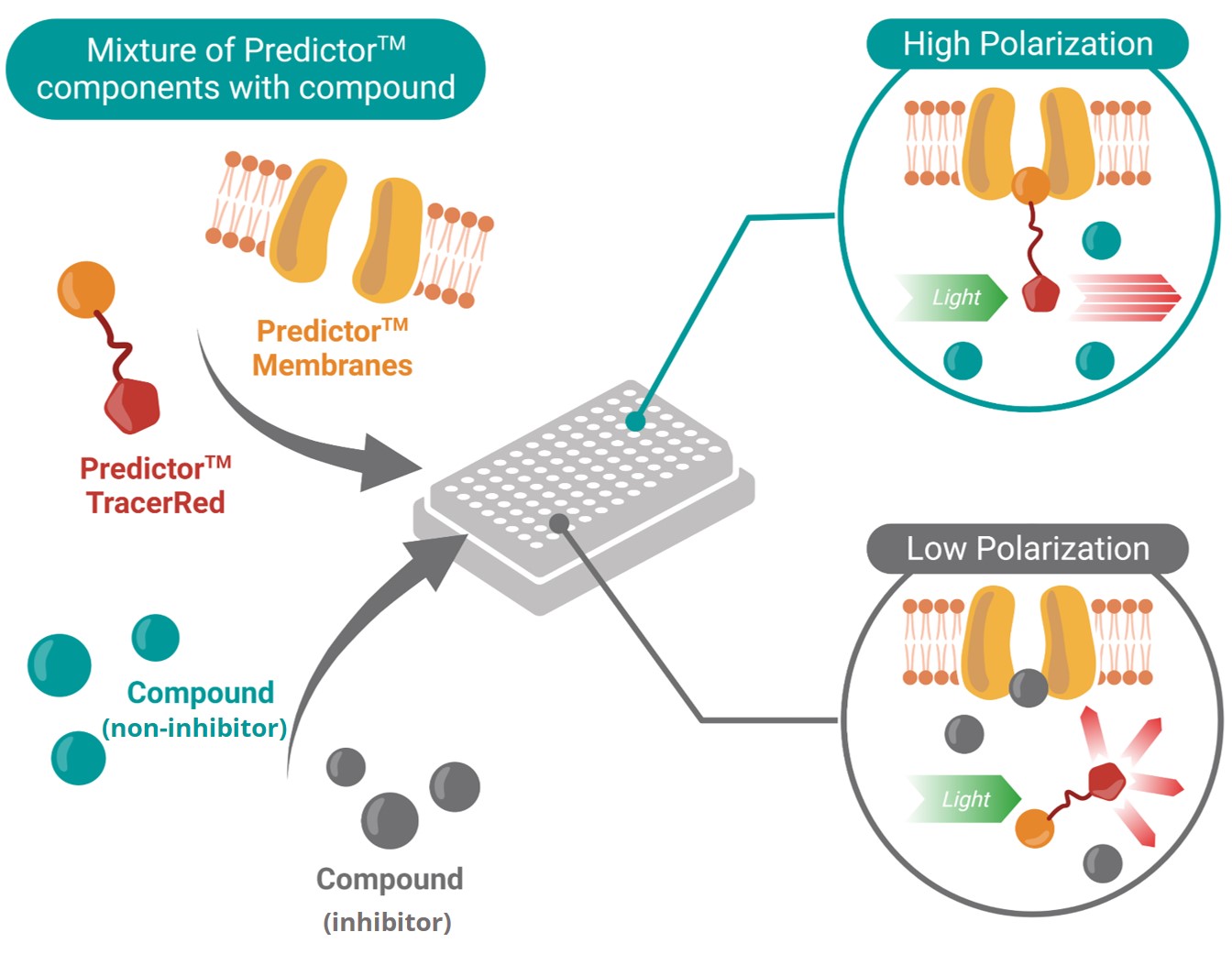hERG binding FP assay
Understanding and managing hERG inhibition properties of a compound at the earliest possible is important to improve safety and efficacy of therapeutic molecules. We utilize Predictor hERG binding fluorescence polarization assay as a tool for assessing hERG channel affinity generating IC50 data that tightly correlates with radioligand/ patch-clamp literature data.
Assay principle
Figure-A: The assay uses a membrane fraction containing hERG channel protein (Predictor hERG Membrane) and a high-affinity red fluorescent hERG channel ligand, or “tracer” (Predictor hERG Tracer Red), in a homogenous, fluorescence polarization (FP)- based format. When Predictor hERG Tracer Red is bound by the hERG channel protein, the tracer produces a high fluorescence polarization.
Compounds that bind to the hERG channel protein (competitors) are identified by displacing the tracer from the hERG channel protein, resulting in a lower fluorescence polarization.
Compound profiling
Figure-B: Concentration-response curves (DRC) of four known hERG channel blockers in Predictor fluorescence polarization assay. Each test condition represents data from duplicate wells in 384 well format. Assay can also be performed in single concentration spot test format.

Table-C: Compound IC50 in Predictor hERG fluorescence polarization assay. IC50 values correlate extremely well with published values in radioligand and patch-clamp assays.
Predictor hERG fluorescence polarization assays performed at BioMedha are robust tools in a non-GLP format, enabled us supporting medicinal chemistry to assess/ understand the safety profile of a chemical series and de-risking drug discovery pipeline at an early stage. Assay is compatible with commonly used organic solvents (DMSO, methanol, ethanol) and can tolerate up to 5% (v/v) final concentration in the assay.


